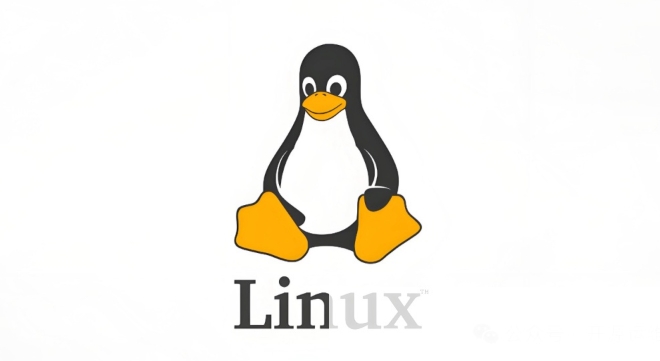A Comparison of File Systems for Linux: Ext4 vs Btrfs vs XFS
Use Ext4 for desktops or basic servers where stability and simplicity are key, as it is mature, reliable, and well-supported but lacks advanced features like snapshots or checksums. 2. Choose Btrfs for home servers, NAS, or container environments needing snapshots, subvolumes, data integrity via checksums, and flexible storage management, though it has higher complexity and potential write overhead. 3. Opt for XFS in enterprise or media-heavy setups requiring high performance with large files, excellent scalability, and strong throughput, especially in RHEL-based systems, despite lacking checksums and being non-shrinkable. The best choice depends on workload: Ext4 for reliability, Btrfs for features and data integrity, XFS for performance at scale.

When choosing a file system for Linux, Ext4, Btrfs, and XFS are among the most widely used options—each with distinct strengths and trade-offs. The right choice depends on your use case: desktop use, server workloads, data integrity needs, or scalability requirements. Here's a practical comparison to help you decide.

1. Performance and Use Case Fit
Ext4 – The Reliable Workhorse
Ext4 (Fourth Extended File System) is the default on many Linux distributions for good reason: it's stable, well-tested, and performs well for general-purpose tasks.
- Best for: Desktops, laptops, and traditional server setups where simplicity and reliability matter.
- Pros:
- Mature and extremely stable.
- Fast file access for small to medium-sized files.
- Good backward compatibility.
- Cons:
- No built-in support for snapshots or checksums.
- Limited scalability compared to newer file systems.
- Online defragmentation is possible but not as robust.
Ext4 is a safe bet if you're not pushing storage limits or need advanced features.

2. Advanced Features: Btrfs Brings Modern Capabilities
Btrfs (B-tree File System) is designed for modern storage needs, offering features that feel more like a storage platform than just a file system.
- Best for: Home servers, NAS setups, containers, and environments where data integrity and flexibility are key.
- Pros:
- Built-in support for snapshots, subvolumes, and RAID-like functionality (RAID 0/1/10).
- Data and metadata checksums for detecting silent data corruption.
- Copy-on-write (CoW) helps prevent data loss during crashes.
- Easy online resizing and device management (add/remove drives on the fly).
- Cons:
- RAID 5/6 support is still considered unstable.
- Can be slower with heavy write workloads due to CoW overhead.
- More complex to troubleshoot; less mature than Ext4 or XFS.
Example: If you run a home lab or backup server, Btrfs snapshots let you roll back to a known-good state after a failed update—without external tools.

Despite past concerns about stability, Btrfs is now considered production-ready in many scenarios (e.g., SUSE, Fedora Silverblue).
3. Scalability and Large File Handling: XFS Shines
XFS was originally developed by SGI for high-performance, large-scale systems and excels when dealing with big files and high throughput.
- Best for: Media servers, databases, enterprise environments, and large storage arrays.
- Pros:
- Excellent performance with large files and parallel I/O.
- Highly scalable—handles multi-terabyte file systems with ease.
- Fast file system creation and repair (though repairs are limited).
- Strong support in RHEL/CentOS environments.
- Cons:
- No built-in snapshots or checksums (relies on LVM for snapshots).
- Can’t shrink file systems (only grow).
- More memory-intensive than Ext4.
If you’re editing 4K video files or running a high-throughput database, XFS often outperforms Ext4 and Btrfs in sequential read/write speed.
4. Data Integrity and Recovery
-
Ext4: Minimal data integrity features. No checksums—corruption can go undetected. Recovery relies on
fsck, which can be slow on large drives. - Btrfs: Strong data protection with checksums and self-healing (when used with mirrored data). Scrubbing tools help detect and fix issues proactively.
-
XFS: No checksums for data or metadata. Uses
xfs_repairfor recovery, but it’s less forgiving than Btrfs scrubbing and can’t fix everything.
For long-term data storage or archival, Btrfs has a clear edge in detecting and correcting corruption.
Which Should You Choose?
Here’s a quick decision guide:
-
Use Ext4 if:
- You want a simple, proven file system for a desktop or basic server.
- You prioritize stability over features.
- You don’t need snapshots or advanced volume management.
-
Use Btrfs if:
- You want snapshots, checksums, or easy backup/versioning (e.g., with
snapperTimeshift). - You’re running a NAS, container host, or development environment.
- You value data integrity and flexible storage pooling.
- You want snapshots, checksums, or easy backup/versioning (e.g., with
-
Use XFS if:
- You handle large files (video, scientific data, VM images).
- You need high throughput and scalability.
- You're in an enterprise environment (especially RHEL-based).
Bottom line:
Ext4 is the safe default.
Btrfs is the feature-rich future, ideal for personal and flexible setups.
XFS dominates in performance and scale for big-data workloads.
Basically, it’s not about which is “best”—it’s about what fits your workload. Most users can stick with Ext4, but exploring Btrfs or XFS opens up powerful tools when you need them.
The above is the detailed content of A Comparison of File Systems for Linux: Ext4 vs Btrfs vs XFS. For more information, please follow other related articles on the PHP Chinese website!

Hot AI Tools

Undress AI Tool
Undress images for free

Undresser.AI Undress
AI-powered app for creating realistic nude photos

AI Clothes Remover
Online AI tool for removing clothes from photos.

Clothoff.io
AI clothes remover

Video Face Swap
Swap faces in any video effortlessly with our completely free AI face swap tool!

Hot Article

Hot Tools

Notepad++7.3.1
Easy-to-use and free code editor

SublimeText3 Chinese version
Chinese version, very easy to use

Zend Studio 13.0.1
Powerful PHP integrated development environment

Dreamweaver CS6
Visual web development tools

SublimeText3 Mac version
God-level code editing software (SublimeText3)
 How to make PHP container support automatic construction? Continuously integrated CI configuration method of PHP environment
Jul 25, 2025 pm 08:54 PM
How to make PHP container support automatic construction? Continuously integrated CI configuration method of PHP environment
Jul 25, 2025 pm 08:54 PM
To enable PHP containers to support automatic construction, the core lies in configuring the continuous integration (CI) process. 1. Use Dockerfile to define the PHP environment, including basic image, extension installation, dependency management and permission settings; 2. Configure CI/CD tools such as GitLabCI, and define the build, test and deployment stages through the .gitlab-ci.yml file to achieve automatic construction, testing and deployment; 3. Integrate test frameworks such as PHPUnit to ensure that tests are automatically run after code changes; 4. Use automated deployment strategies such as Kubernetes to define deployment configuration through the deployment.yaml file; 5. Optimize Dockerfile and adopt multi-stage construction
 System requirements to install linux
Jul 20, 2025 am 03:49 AM
System requirements to install linux
Jul 20, 2025 am 03:49 AM
Linuxcanrunonmodesthardwarewithspecificminimumrequirements.A1GHzprocessor(x86orx86_64)isneeded,withadual-coreCPUrecommended.RAMshouldbeatleast512MBforcommand-lineuseor2GBfordesktopenvironments.Diskspacerequiresaminimumof5–10GB,though25GBisbetterforad
 What is the code number of Bitcoin? What style of code is Bitcoin?
Jul 22, 2025 pm 09:51 PM
What is the code number of Bitcoin? What style of code is Bitcoin?
Jul 22, 2025 pm 09:51 PM
As a pioneer in the digital world, Bitcoin’s unique code name and underlying technology have always been the focus of people’s attention. Its standard code is BTC, also known as XBT on certain platforms that meet international standards. From a technical point of view, Bitcoin is not a single code style, but a huge and sophisticated open source software project. Its core code is mainly written in C and incorporates cryptography, distributed systems and economics principles, so that anyone can view, review and contribute its code.
 How to use the `shutdown` command
Jul 15, 2025 am 12:26 AM
How to use the `shutdown` command
Jul 15, 2025 am 12:26 AM
The shutdown command of Linux/macOS can be shut down, restarted, and timed operations through parameters. 1. Turn off the machine immediately and use sudoshutdownnow or -h/-P parameters; 2. Use the time or specific time point for the shutdown, cancel the use of -c; 3. Use the -r parameters to restart, support timed restart; 4. Pay attention to the need for sudo permissions, be cautious in remote operation, and avoid data loss.
 How to build an independent PHP task container environment. How to configure the container for running PHP timed scripts
Jul 25, 2025 pm 07:27 PM
How to build an independent PHP task container environment. How to configure the container for running PHP timed scripts
Jul 25, 2025 pm 07:27 PM
Building an independent PHP task container environment can be implemented through Docker. The specific steps are as follows: 1. Install Docker and DockerCompose as the basis; 2. Create an independent directory to store Dockerfile and crontab files; 3. Write Dockerfile to define the PHPCLI environment and install cron and necessary extensions; 4. Write a crontab file to define timing tasks; 5. Write a docker-compose.yml mount script directory and configure environment variables; 6. Start the container and verify the log. Compared with performing timing tasks in web containers, independent containers have the advantages of resource isolation, pure environment, strong stability, and easy expansion. To ensure logging and error capture
 How to Securely Erase a Hard Drive on Linux
Jul 24, 2025 am 12:08 AM
How to Securely Erase a Hard Drive on Linux
Jul 24, 2025 am 12:08 AM
Confirm the target hard disk device name (such as /dev/sda) to avoid accidentally deleting the system disk; 2. Use sudoddif=/dev/zeroof=/dev/sdXbs=1Mstatus=progress to overwrite the zero value in full disk, which is suitable for most scenarios; 3. Use sudoshred-v-n3/dev/sdX for three random data overwrites to ensure that it cannot be restored; 4. Optionally execute sudobadblocks-wsv/dev/sdX for destructive write tests; finally use sudohexdump-C/dev/sdX|head to verify whether it is all zero and complete safe erasing.
 how to add a user in linux
Jul 21, 2025 am 03:32 AM
how to add a user in linux
Jul 21, 2025 am 03:32 AM
Add useradd or adduser commands commonly used by users in Linux. 1. When using useradd, you need to manually set the password and home directory. Add the -m parameter to create the home directory; 2. You can specify the shell, group and UID through parameters such as -s, -G, and -u; 3. Adduser is an interactive command, suitable for novices to automatically complete the configuration; 4. Pay attention to permissions, username uniqueness and home directory permissions; 5. Userdel can be used to delete users and home directory by mistake. Mastering these key points allows you to manage users efficiently and securely.
 How to get help for a command in Linux?
Jul 17, 2025 am 12:55 AM
How to get help for a command in Linux?
Jul 17, 2025 am 12:55 AM
There are four ways to obtain command help in Linux: First, use --help to view basic usage, which is suitable for quickly understanding common options and parameters of commands; second, use man to view the complete man page, providing detailed command descriptions and examples; third, use info to view structured help, which is suitable for information navigation of complex commands such as gcc and make; fourth, refer to network resources and communities, such as Linux China, StackOverflow and other platforms to obtain Chinese materials or solve specific problems. It is recommended for beginners to master it step by step from --help and man.








